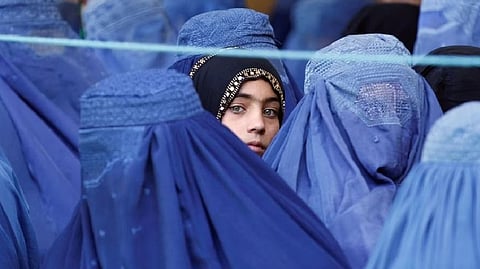

This year, International Women’s Day is being observed in the backdrop of some distressing reports. A few days ago, many schoolgirls in Iran had taken ill after their classrooms were targetted with toxic fumes. This latest affront to the dignity of women in the Islamic nation comes on the back of protests triggered after a young woman lost her life, having been interrogated by the country’s hard-liner morality police. Likewise, in neighbouring Afghanistan, a decade’s worth of progress made in the field of inclusivity, education and women’s rights was swept away in the blink of an eye after the Taliban assumed power.
The United Nation Secretary General Antonio Guterres pointed out earlier this week that the notion of gender parity might not become a reality for at least 300 years, considering the pace of advancements. The official warned that women’s rights were being abused, violated and threatened around the world. The comments were made at the opening session of the Commission on the Status of Women, an international body of the UN, fighting for gender equality.
In nations like Afghanistan, women and girls are being erased from public life. But the situation is not so encouraging in one of the most prosperous nations in the world as well. In the US, women’s sexual and reproductive rights are being rolled back in a regressive manner, as federal constitutional protection to abortion was withdrawn last year in the aftermath of a Supreme Court ruling that struck down the Roe vs Wade judgment. Many States have subsequently restricted access to abortion and other reproductive health measures.
Apart from this, women in war-torn zones are also subject to the threat of kidnapping and sexual violence, something that was highlighted in the Russian invasion of Ukraine. The UN had also shone a light on statistics pertaining to maternal mortality which is on the rise. The impact of the pandemic has also compelled many young girls into marriage, even as mothers and caregivers themselves search for hard-to-find paid work.
The UN Commission on the Status of Women in its two week session has also trained its focus on narrowing the gender gap in innovation and technology. The issue is significant as millions of women are still behind the curve in technology adoption. Close to 300 crore people in the world do not have access to the internet, and a majority of them happen to be women living in developing nations. Just about 19% of women in least developed nations were said to be online.
On the higher education front, women constitute just 1/3rd of students who have taken up science, technology, engineering and mathematics globally. The disparity trickles down to the work space too where women are outnumbered by men one to two in the technology sector; and only 1 in 5 workers in the artificial intelligence discipline is a woman.
There is a need to tip the scales in favour of gender parity. Efforts to increase education, employment and income levels among women need to be prioritised in emerging economies. There are incentives to ensuring the participation and leadership of women in areas such as science and tech, which need to be promoted from the grassroots levels — from classrooms to boardrooms, and the government as well. The digital divide and discrimination must also be addressed in a systematic manner — there are over 25.9 crore more men with internet access than women, although women are more impacted in aspects of gender trolling. It’s a tall order no doubt, but ensuring parity is never a cakewalk.
Visit news.dtnext.in to explore our interactive epaper!
Download the DT Next app for more exciting features!
Click here for iOS
Click here for Android